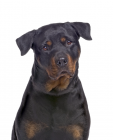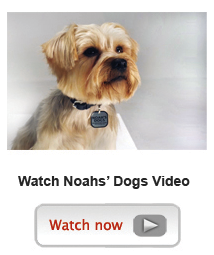Rottweiler
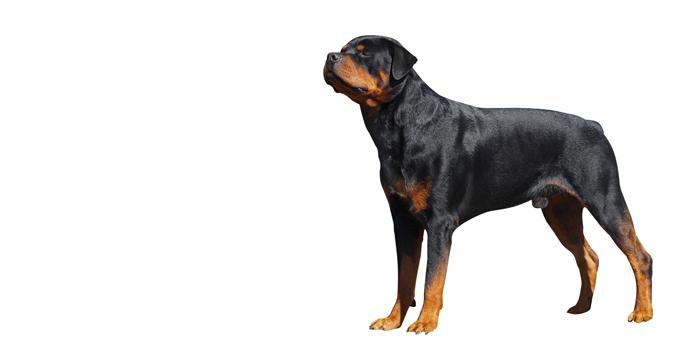
In my own words
“I may look tough but I’m nice as pie once you get to know me!”
Did I scare you? I hope not! My kind is often mistaken for being aggressive but we’re not all that bad you know! I can be very protective of my family and my home but that’s only because I care. My kind have always been guarding dogs you see, it’s in my nature to want to look after you! I make a great guard dog too, absolutely nothing is going to get past me!
I like being silly and clowning around too though. I’m not as serious as I look. You know what they say, don’t judge a book by its cover! I’m actually quite sensitive so why not try to get to know me and you’ll see I’m a lot friendlier than I look!
My ideal owner(s)
Experienced, confident owners
People who like long walks
People who like short runs
Active, Outdoorsy types
What they say about me
Intelligent
Loyal
Protective
Brave
Please read on, to find out more about me, and whether I will be someone you can be happy with for the next 12 years, or even longer!
Is this Rottweiler for you?
Test your knowledge about the Rottweiler
Information essential about the Rottweiler
Kennel Club Group:
Working
Rottweilers belong to the working group and are used as guard dogs, watch dogs, police dogs, companions and seen in the show-ring.
Size:
Large: Weight Male 85 – 135 lb (50 – 58 kg) Female 80 – 100 lb (40 – 48 kg)
Height Male 24 – 27” (63 – 69 cm) Female 22– 25” (58 – 64 cm)
Popularity:
This breed enjoys huge popularity as pets.
Breed History:
The Rottweiler has origins that are unknown, however it probably descended from the Italian Mastiff. It is said that the Mastiff type dog used as far back as Roman times for droving livestock is an ancestor of the modern Rottweiler. As the Romans Empire grew, these Mastiff types mated with local dogs. The Romans settled in areas in Southern Germany famed for its fertile soils and temperate climate. The Rottweiler was named after the German town of Rottweil and was a useful, multipurpose dog used for guarding, herding and due to their size and strength, pulling carts.
The ancestors of the breed were the dogs used by the Roman legions to drove and guard their livestock as they crossed the Alps, which may mean that they are connected to the Greater Swiss Mountain Dogs and Entelbuchers which are also descended from Roman dogs. At this time, it was also the theory that they were used to hunt wild boar. By the Middle Ages, in Rottweil, Germany these dogs had been crossed with local sheepdogs to create the 'Rottweiler Metzgerhund', the Rottweil Butchers' Dog. Butchers used these dogs to drive and guard their livestock as it made its way on foot from town to town. In the 19th century cattle-driving became illegal in Germany and the Rottweiler suffered a decline in popularity until 1914 when they were once again brought into use for the war, which proved their physical and mental abilities. The breed entered the United States in the 1930's and was accepted into their Kennel Club in 1935, being accepted by the British Kennel Club the following year. The popularity of this dog peaked in the UK during the 1990s.
Character:
This breed is intelligent but can be rather dominant and require firm and consistent training from a young age with a calm handler. This breed is extremely sensitive so use your voice to your advantage when praising the dog. They are very loyal to their handlers and families and defend their family and property to the end. They are protective and brave but can be jealous if not given enough attention. The temperament can vary, some are independent, aloof and less friendly while other are outgoing, and gregarious.
Temperament:
This breed can be a fun loving dog but is powerful and can be serious at times. Early socialisation and training are extremely important for this breed as they can be very territorial and protective of their family and home. Rottweilers can be very intimidating, still retaining an undeserving reputation as a vicious and/or mean dog, however they do extremely well in a family environment. While they may be aloof and ‘standoffish’ with strangers (which is not surprising giving its guarding heritage), the Rottweiler’s general nature is one of even temper, placid, devoted and calm. The temperament of the Rottweiler can vary. Some can be very affectionate and somewhat of a clown, while others can be bullies. Their easy going intelligence should ensure that learning new commands and behaviours should not be too much of an issue for a Rottie and when a good training programme is in place making it possible for the playful side of this dog to come out in safety.
Conformation:
This breed is medium to large and compact. They are one of the strongest and most powerful dogs in the world for their size. Built for trotting, this breed are well-balanced and move with purpose. They are agile and capable of running and jumping with ease. The head should be of medium length with a well-developed, but not conspicuous, occiput and a well-defined stop. The teeth should be strong with a scissor bite. The eyes are almond shaped, medium sized and dark brown with small, high set ears that are wide apart and lie flat. The neck is fairly long, round, muscular and slightly arched. The back should be straight, strong but not too long with a broad and very slightly sloping croup. The shoulders should be well-laid back and the front legs straight and muscular with plenty of bone and substance. The hindlegs, broad and strongly muscled, have fairly well-bent stifles and strong, sound hocks. The feet should be strong, round and compact with well-arched toes; the hindfeet being slightly longer. The tail is short or ‘bob tailed’ and this was a breed which was traditionally docked, although with the passing of legislation in the UK prohibiting this (with permitted exceptions), the majority of Rottweilers have their natural tail.
Coat:
The coat is solid black, flat lying with rust or tan markings. This is a double coat breed and the undercoat is very fine and not visible through the outer coat which is coat and of medium length
Colour:
The coat is black with tan markings.
Training:
This breed is eager to learn and obedience training is a must as this breed can become destructive without enough stimulation. They require a firm and dominant handler when being trained. They are extremely intelligent and does well in dog sports but can be stubborn It is essential that this breed is socialised at an early age. Attack training is highly discouraged in case it overstimulates their already protective natures and they become uncontrollable. Rottweilers can do well with children if raised around them, but should be supervised around small children due to their sheer size and power. With the strength and power contained within the body of this breed, it is imperative that a good basic training is adhered to. Given this as a fact, Rottweiler’s are suited best to owners with previous dog owning experience who can bring out the best in them.
Care:
This breed has a short, glossy coat which is relatively easy to groom. They are an average shedder and benefit from regular brushing with a firm bristle brush to remove excess, loose hair. Bathing too often will remove the natural oils from the coat and/or skin. Dry shampooing is used by many Rottweiler owners as well as breeders so they are not to remove the essential oils in this breeds coat. The Rottweiler has a tendency to put on weight so care must be taken to make sure their weight/height ratio is monitored. This breed can become distressed if left alone for long periods of time and require an experienced owner. They have a tendency to become lazy if given the chance as they are inactive indoors. They do no require much exercise each day but do enjoy long walks.
Health:
The lifespan of a healthy individual is between 10 and 12 years, which is normal for a dog of this size. However, some live for as long as 15 years. If you buy from a reputable, responsible breeder, health problems should not occur. This breed is generally quite healthy but can be prone to hip dysplasia and to rupturing the cruciate ligament while exercising so ensure that the dog does not leap from the hind leg when catching a ball. This breed has a tendency to overeat and put on weight so regular exercise is important for this breed. Puppies must be chosen from parents who have been temperament-tested and who have been hip-screened and given a good rating. Rottweillers have become unusually susceptible to parvovirus which is somewhat concerning for breeders. Because dietary problems have occurred in the breed, make sure the breeder gives you a recommended feeding plan when purchasing your puppy. The most common causes of death in Rotties are heart disease, cancer and bloat.
Exercise:
This breed benefits from plenty of exercise to prevent behavioural problems. They benefit from running in the woods and open countryside and do not wander far from their owners. They love swimming and happily run alongside a bicycle. They require at least a large sized yard to play in and benefits from at least two long walks a day totalling to at least two hours of exercise per day.
You may also like:
Rottweilers looking for a home in UK »
 (Interest Shown)">
(Interest Shown)"> (Interest Shown)" class="overviewimg"/>
(Interest Shown)" class="overviewimg"/>



If you like Rottweilers, you may be interested in breeds of the same size »
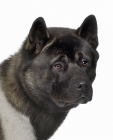
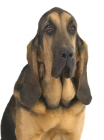



If you like Rottweilers, you may like other breeds with similar characteristics »
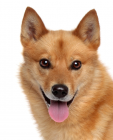
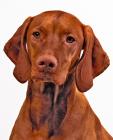


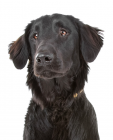
If you like Rottweilers, you may be interested in these other working dogs »

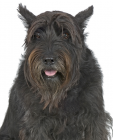
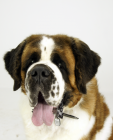
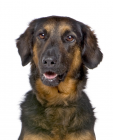
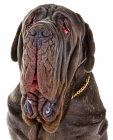
Advice on choosing your breed »
Find an animal shelter or rescue home where a Rottweiler is waiting for a new home »
The following grid gives a fast track review which covers all breeds. You can apply it to help you decide if a Rottweiler is suitable for you, the environment where you live, your personality and your lifestyle. On the grid, 1= strongly disagree, and 5= strongly agree. For example, if you are looking for a dog that likes to swim, look down the list under Activities, and you will see that Rottweilers love water and are strong swimmers, scoring 5. You might like to save or print off this section and keep it for reference while you check some other breeds before making your final choice.
Be the first to rate this breed »
|
*PLEASE NOTE: All our breed profiles are general, and all dogs are individuals. Always talk to the breeders and meet the owners you are buying from. Try to meet the dog and its parents if it is a puppy in their home environment.








